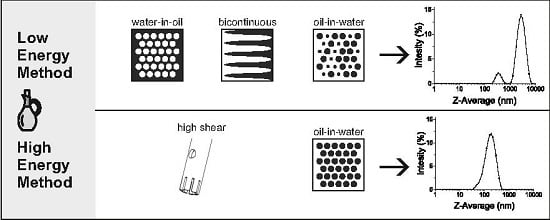Formulation, Characterization and Properties of Hemp Seed Oil and Its Emulsions
Abstract
:1. Introduction
2. Results and Discussion
2.1. Formulation of Emulsions
2.2. Influence of HLB and Oil Type
2.3. Emulsion Stability
2.4. Antibacterial Activity
3. Experimental Methods
3.1. Materials
3.2. Microorganisms
3.3. Characterization of Hemp Seed Oil
3.4. Preparation of Emulsions
3.5. Particle Size Measurements
3.6. Antibacterial Testing
3.7. Statistical Analysis
4. Conclusions
Acknowledgments
Author Contributions
Conflicts of Interest
References
- Callaway, J.C. Hempseed as a nutritional resource: An overview. Euphytica 2004, 140, 65–72. [Google Scholar] [CrossRef]
- Grotenhermen, F.; Russo, E. Cannabis and Cannabinoids: Pharmacology, Toxicology, and Therapeutic Potential, 1st ed.; Integrative Healing Press: New York, NY, USA, 2002. [Google Scholar]
- Jones, K. Nutritional and Medicinal Guide to Hemp Seed; Rainforest Botanical Laboratory: Gibsons, BC, Canada, 1995. [Google Scholar]
- Raikos, V.; Neacsu, M.; Morrice, P.; Duthie, G. Physicochemical stability of egg protein-stabilised oil-in-water emulsions supplemented with vegetable powders. Int. J. Food Sci. Technol. 2014, 49, 2433–2440. [Google Scholar] [CrossRef]
- Dunford, N.T. 2-Hemp and flaxseed oil: Properties and applications for use in food a2-talbot, geoff. In Specialty Oils and Fats in Food and Nutrition, 1st ed.; Woodhead Publishing: Cambridge, UK, 2015; pp. 39–63. [Google Scholar]
- Hazekamp, A.; Fischedick, J.T.; Díez, M.L.; Lubbe, A.; Ruhaak, R.L. Chemistry of Cannabis. In Comprehensive Natural Products II, 1st ed.; Elsevier: Oxford, UK, 2010; pp. 1033–1084. [Google Scholar]
- Acosta, E. Bioavailability of nanoparticles in nutrient and nutraceutical delivery. Curr. Opin. Colloid Interface Sci. 2009, 14, 3–15. [Google Scholar] [CrossRef]
- Sun, Y.; Xia, Z.; Zheng, J.; Qiu, P.; Zhang, L.; McClements, D.J.; Xiao, H. Nanoemulsion-based delivery systems for nutraceuticals: Influence of carrier oil type on bioavailability of pterostilbene. J. Funct. Foods 2015, 13, 61–70. [Google Scholar] [CrossRef]
- Raikos, V.; Ranawana, V. Designing emulsion droplets of foods and beverages to enhance delivery of lipophilic bioactive components—A review of recent advances. Int. J. Food Sci. Technol. 2017, 52, 68–80. [Google Scholar] [CrossRef]
- Ali, E.M.; Almagboul, A.Z.; Khogali, S.M.; Gergeir, U.M. Antimicrobial activity of Cannabis sativa L. Chin. Med. 2012, 3, 61–64. [Google Scholar] [CrossRef]
- Leizer, C.; Ribnicky, D.; Poulev, A.; Dushenkov, S.; Raskin, I. The composition of hemp seed oil and its potential as an important source of nutrition. J. Nutr. Funct. Med. Foods 2000, 2, 35–53. [Google Scholar] [CrossRef]
- Joye, I.J.; McClements, D.J. Biopolymer-based nanoparticles and microparticles: Fabrication, characterization, and application. Curr. Opin. Colloid Interface Sci. 2014, 19, 417–427. [Google Scholar] [CrossRef]
- Gunstone, F.D. Vegetable Oils in Food Technology: Composition, Properties and Uses, 2nd ed.; Wiley-Blackwell: Oxford, UK, 2011. [Google Scholar]
- El-Abbassi, A.; Neves, M.A.; Kobayashi, I.; Hafidi, A.; Nakajima, M. Preparation and characterization of highly stable monodisperse argan oil-in-water emulsions using microchannel emulsification. Eur. J. Lipid Sci. Technol. 2013, 115, 224–231. [Google Scholar] [CrossRef]
- Goula, A.M.; Adamopoulos, K.G. A method for pomegranate seed application in food industries: Seed oil encapsulation. Food Bioprod. Process 2012, 90, 639–652. [Google Scholar] [CrossRef]
- Komaiko, J.; McClements, D.J. Low-energy formation of edible nanoemulsions by spontaneous emulsification: Factors influencing particle size. J. Food Eng. 2015, 146, 122–128. [Google Scholar] [CrossRef]
- Yu, L.L.; Zhou, K.K.; Parry, J. Antioxidant properties of cold-pressed black caraway, carrot, cranberry, and hemp seed oils. Food Chem. 2005, 91, 723–729. [Google Scholar] [CrossRef]
- Kowalska, M.; Ziomek, M.; Zbikowska, A. Stability of cosmetic emulsion containing different amount of hemp oil. Int. J. Cosmet. Sci. 2015, 37, 408–416. [Google Scholar] [CrossRef] [PubMed]
- Raikos, V.; Konstantinidi, V.; Duthie, G. Processing and storage effects on the oxidative stability of hemp (Cannabis sativa L.) oil-in-water emulsions. Int. J. Food Sci. Technol. 2015, 50, 2316–2322. [Google Scholar] [CrossRef]
- Burton, G.; Goo, C.S.; Zhang, Y.Q.; Jun, M.B.G. Use of vegetable oil in water emulsion achieved through ultrasonic atomization as cutting fluids in micro-milling. J. Manuf. Process 2014, 16, 405–413. [Google Scholar] [CrossRef]
- Lawal, S.A.; Choudhury, I.A.; Nukman, Y. Evaluation of vegetable and mineral oil-in-water emulsion cutting fluids in turning aisi 4340 steel with coated carbide tools. J. Clean. Prod. 2014, 66, 610–618. [Google Scholar] [CrossRef]
- Anwar, F.; Latif, S.; Ashraf, M. Analytical characterization of hemp (Cannabis sativa) seed oil from different agro-ecological zones of Pakistan. J. Am. Oil Chem. Soc. 2006, 83, 323–329. [Google Scholar] [CrossRef]
- Teh, S.S.; Birch, J. Physicochemical and quality characteristics of cold-pressed hemp, flax and canola seed oils. J. Food Compos. Anal. 2013, 30, 26–31. [Google Scholar] [CrossRef]
- Ostertag, F.; Weiss, J.; McClements, D.J. Low-energy formation of edible nanoemulsions: Factors influencing droplet size produced by emulsion phase inversion. J. Colloid Interface Sci. 2012, 388, 95–102. [Google Scholar] [CrossRef] [PubMed]
- Gullapalli, R.P.; Sheth, B.B. Influence of an optimized non-ionic emulsifier blend on properties of oil-in-water emulsions. Eur. J. Pharm. Biopharm. 1999, 48, 233–238. [Google Scholar] [CrossRef]
- Pereira, T.; Guerreiro, C.; Maruno, M.; Ferrari, M.; Rocha-Filho, P. Exotic vegetable oils for cosmetic o/w nanoemulsions: In vivo evaluation. Molecules 2016, 21, 248. [Google Scholar] [CrossRef] [PubMed]
- Lane, K.E.; Li, W.; Smith, C.J.; Derbyshire, E.J. The development of vegetarian omega-3 oil in water nanoemulsions suitable for integration into functional food products. J. Funct. Foods 2016, 23, 306–314. [Google Scholar] [CrossRef]
- Krasodomska, O.; Jungnickel, C. Viability of fruit seed oil o/w emulsions in personal care products. Colloids Surf. A: Physicochem. Eng. Asp. 2015, 481, 468–475. [Google Scholar] [CrossRef]
- Florence, A.T.; Attwood, D. Physicochemical Principles of Pharmacy, 5th ed.; Pharmaceutical Press: London, UK, 2011. [Google Scholar]
- Sevcikova, P.; Kasparkova, V.; Hauerlandova, I.; Humpolicek, P.; Kucekova, Z.; Bunkova, L. Formulation, antibacterial activity, and cytotoxicity of 1-monoacylglycerol microemulsions. Eur. J. Lipid Sci. Technol. 2014, 116, 448–457. [Google Scholar]
- Rao, J.; McClements, D.J. Lemon oil solubilization in mixed surfactant solutions: Rationalizing microemulsion and nanoemulsion formation. Food Hydrocoll. 2012, 26, 268–276. [Google Scholar] [CrossRef]
- Mehmood, T. Optimization of the canola oil based vitamin e nanoemulsions stabilized by food grade mixed surfactants using response surface methodology. Food Chem. 2015, 183, 1–7. [Google Scholar] [CrossRef] [PubMed]
- Homayoonfal, M.; Khodaiyan, F.; Mousavi, S.M. Optimization of walnut oil nanoemulsions prepared using ultrasonic emulsification: A response surface method. J. Disper. Sci. Technol. 2014, 35, 685–694. [Google Scholar] [CrossRef]
- Rebolleda, S.; Sanz, M.T.; Benito, J.M.; Beltrán, S.; Escudero, I.; González San-José, M.L. Formulation and characterisation of wheat bran oil-in-water nanoemulsions. Food Chem. 2015, 167, 16–23. [Google Scholar] [CrossRef] [PubMed]
- Wasim, K.; Haq, I.; Ashraf, M. Antimicrobial studies of the leaf of Cannabis sativa L. Pak. J. Pharm. Sci. 1995, 8, 29–38. [Google Scholar] [PubMed]
- Novak, J.; Zitterl-Eglseer, K.; Deans, S.G.; Franz, C.M. Essential oils of different cultivars of Cannabis sativa L. And their antimicrobial activity. Flavour Fragr. J. 2001, 16, 259–262. [Google Scholar] [CrossRef]
- Seidel, V.; Taylor, P.W. In vitro activity of extracts and constituents of pelagonium against rapidly growing mycobacteria. Int. J. Antimicrob. Agents 2004, 23, 613–619. [Google Scholar] [CrossRef] [PubMed]
- Matthaus, B.; Bruhl, L. Virgin hemp seed oil: An interesting niche product. Eur. J. Lipid Sci. Technol. 2008, 110, 655–661. [Google Scholar] [CrossRef]
- Altieri, C.; Bevilacqua, A.; Cardillo, D.; Sinigaglia, M. Effectiveness of fatty acids and their monoglycerides against gram-negative pathogens. Int. J. Food. Sci. Technol. 2009, 44, 359–366. [Google Scholar] [CrossRef]
- Ghosh, V.; Mukherjee, A.; Chandrasekaran, N. Eugenol-loaded antimicrobial nanoemulsion preserves fruit juice against, microbial spoilage. Colloid Surf. B 2014, 114, 392–397. [Google Scholar] [CrossRef] [PubMed]
- Toutain-Kidd, C.M.; Kadivar, S.C.; Bramante, C.T.; Bobin, S.A.; Zegans, M.E. Polysorbate 80 inhibition of pseudomonas aeruginosa biofilm formation and its cleavage by the secreted lipase lipa. Antimicrob. Agents Chemother. 2009, 53, 136–145. [Google Scholar] [CrossRef] [PubMed]
- AOCS. Official Methods and Recommended Practices of the American Oil Chemists’ Society, 6th ed.; AOCS Press: Champaign, IL, USA, 2011. [Google Scholar]
Sample Availability: Not available. |

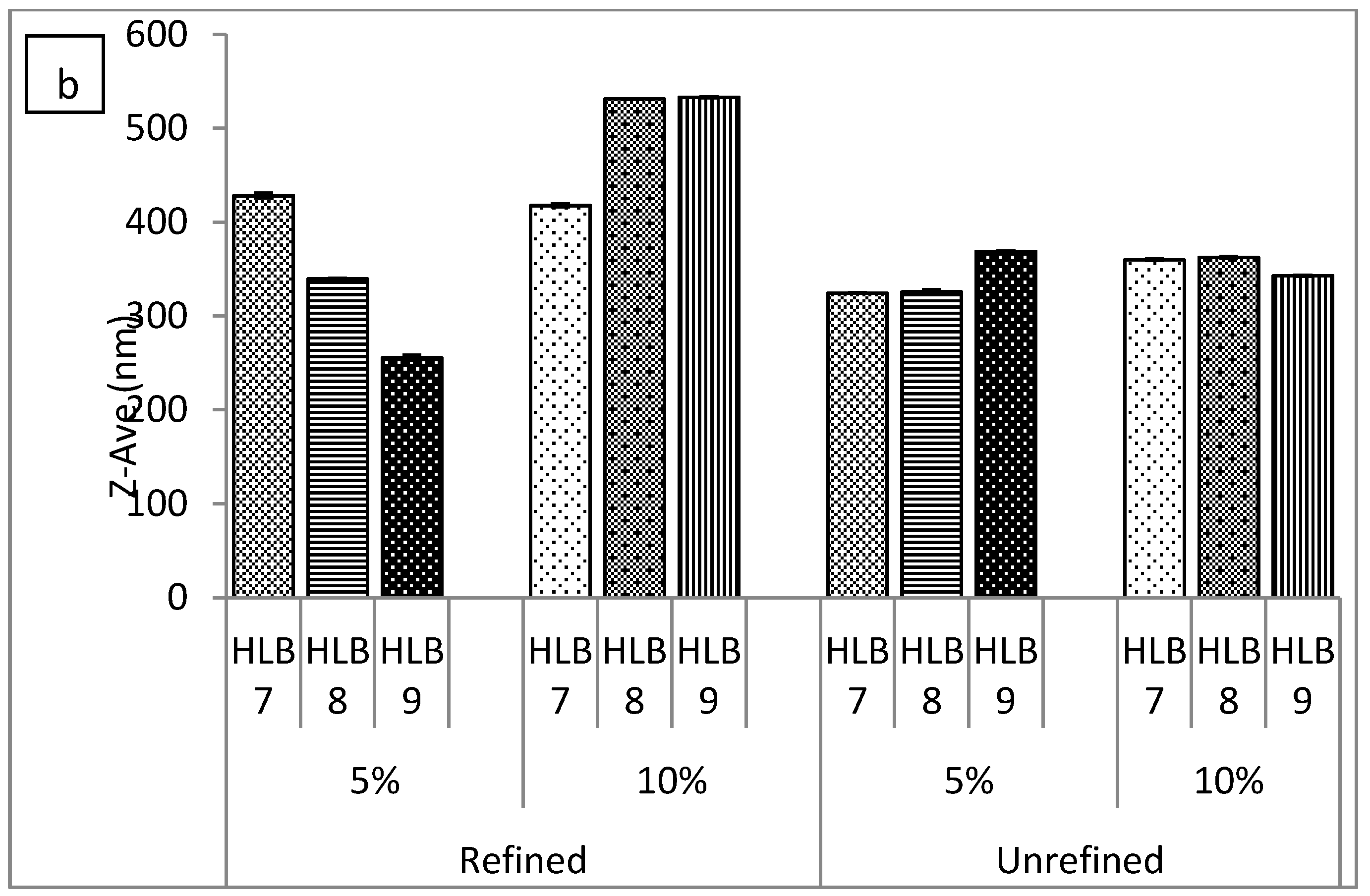
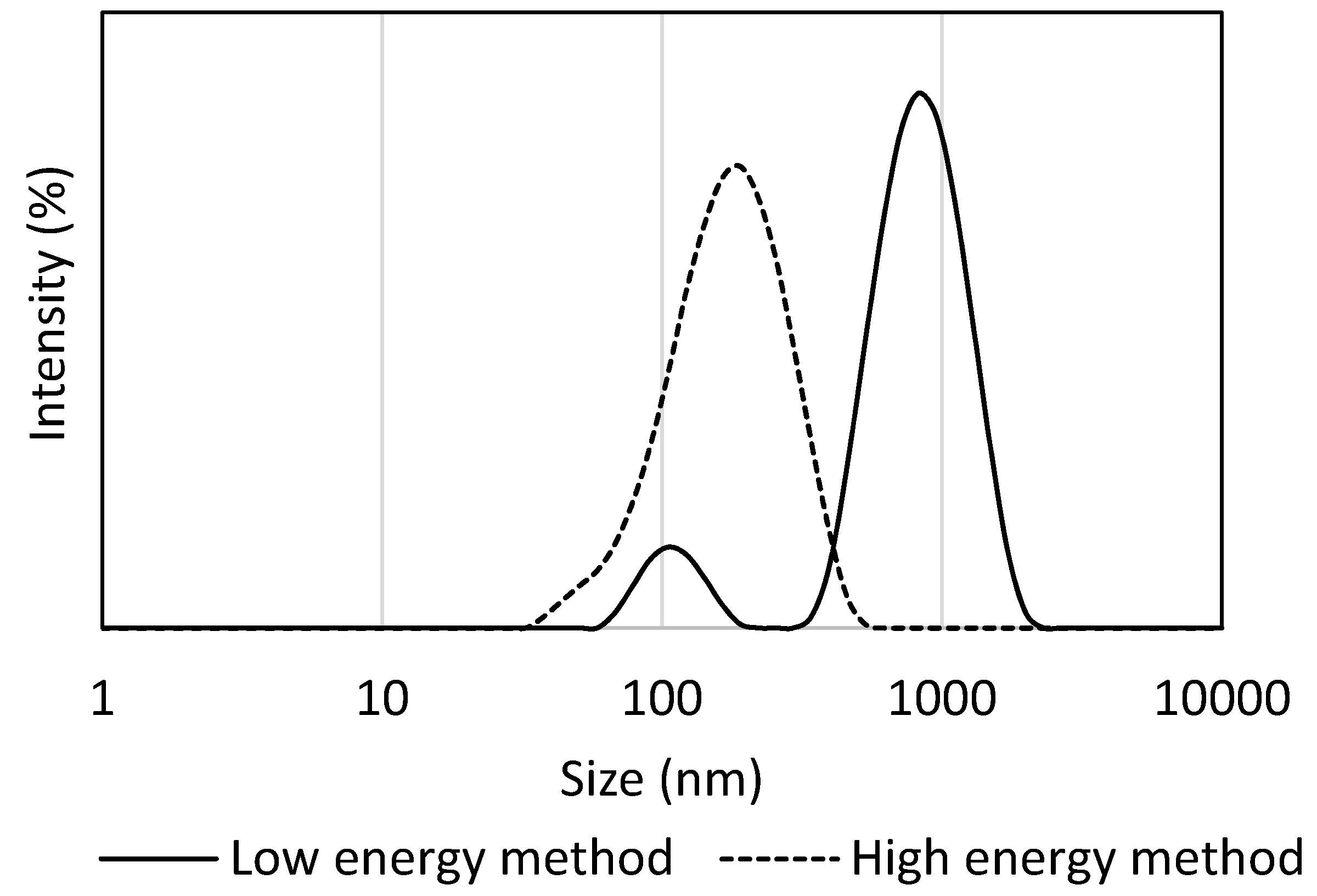
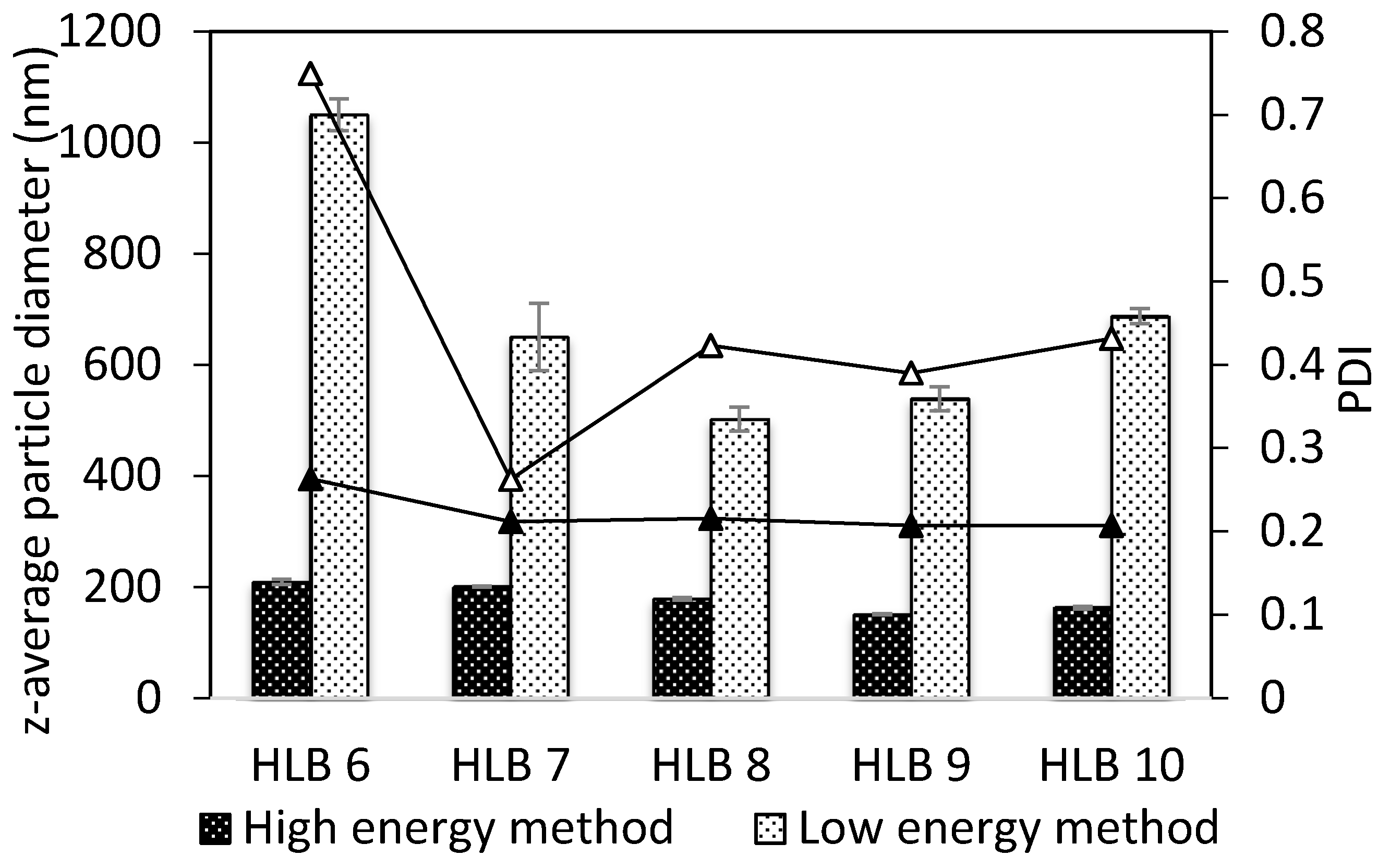
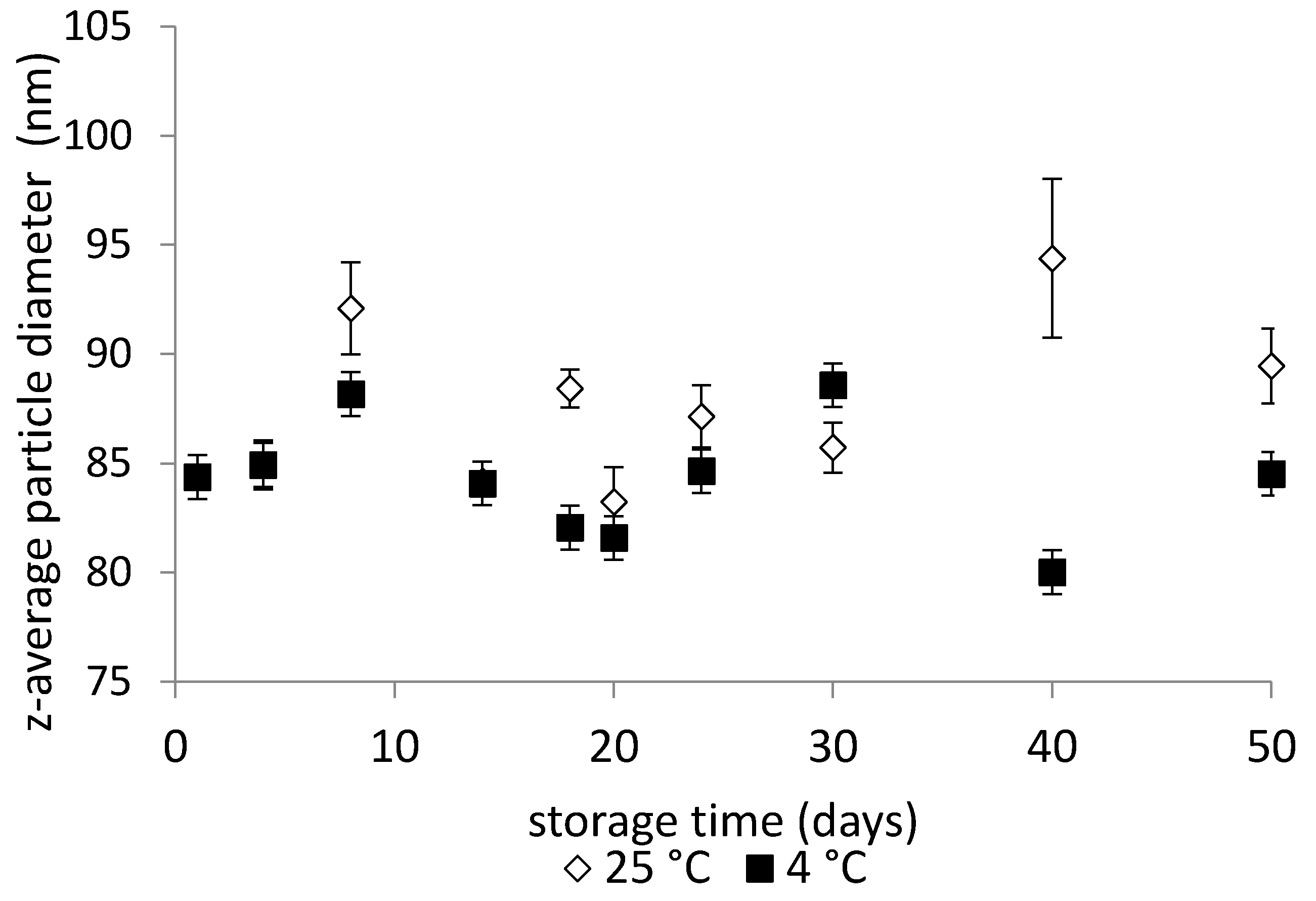
| Fatty Acid | Concentration (g/100 g) | |
|---|---|---|
| Unrefined Oil | Refined Oil | |
| Myristic | 0.04 ± 0.03 | n.d. |
| Palmitic | 5.9 ± 0.27 | 6.2 ± 0.13 |
| Palmitoleic | 0.1 ± 0.00 | 0.1 ± 0.02 |
| Stearic | 2.2 ± 0.04 | 2.4 ± 0.07 |
| Oleic | 9.0 ± 0.15 | 12.1 ± 0.03 |
| Linoleic | 55.3 ± 0.12 | 57.3 ± 0.03 |
| gamma-linolenic | 4.4 ± 0.03 | 3.0 ± 0.02 |
| alpha-linolenic | 20.3 ± 0.03 | 16.7 ± 0.04 |
| Arachidic | 1.7 ± 0.04 | 1.0 ± 0.04 |
| Eikosanoic | 0.7 ± 0.05 | 0.8 ± 0.00 |
| Eikosenoic | 0.4 ± 0.02 | 0.4 ± 0.02 |
| Eikosadienoic | 0.1 ± 0.01 | n.d. |
| Bacterial Strain | Inhibition Zone Size (Ø ± σ) mm | ||
|---|---|---|---|
| Unrefined Oil | Refined Oil | ||
| G+ | Bacillus cereus CCM 2010 | 2.3 ± 0.6 a | 0.0 ± 0.0 a |
| Bacillus subtilis subsp. subtilis CCM 2216 | 2.3 ± 1.8 a | 0.0 ± 0.0 a | |
| Micrococcus luteus CCM 732 | 3.3 ± 1.8 | 2.7 ± 1.2 | |
| Staphylococcus aureus subsp. aureus CCM 3953 | 3.0 ± 0.0 | 3.0 ± 1.2 | |
| G− | Citrobacter freundii CCM 7187 | 2.3 ± 0.6 a | 0.0 ± 0.0 a |
| Enterococcus faecalis CCM 4224 | 2.3 ± 0.6 | 2.7 ± 0.6 | |
| Escherichia coli CCM 3954 | 0.3 ± 0.6 | 0.0 ± 0.0 | |
| Salmonella enterica subsp. enterica ser. Enteritidis CCM 4420 | 3.0 ± 1.8 | 2.0 ± 1.2 | |
| Serratia marcescens subsp. marcescens CCM 303 | 2.7 ± 0.6 | 0.7 ± 1.2 | |
| Pseudomonas aeruginosa CCM 395 | 1.7 ± 0.6 | 2.3 ± 0.6 | |
| Amount of Surfactants (g) | HLB of the Mixture (Tween/Span Ratio) | |||
|---|---|---|---|---|
| Tween 80 (HLB 15) | Span 80 (HLB 4.3) | Tween 85 (HLB 11) | Span 85 (HLB 1.8) | |
| 0.794 | 4.206 | - | - | 6 (0.19) |
| 1.262 | 3.738 | - | - | 7 (0.34) |
| - | - | 2.826 | 2.174 | 7 (1.30) |
| 1.729 | 3.271 | - | - | 8 (0.52) |
| - | - | 3.370 | 1.630 | 8 (2.07) |
| 2.196 | 2.804 | - | - | 9 (0.78) |
| - | - | 3.913 | 1.087 | 9 (3.60) |
| 2.664 | 2.336 | - | - | 10 (1.14) |
© 2017 by the authors. Licensee MDPI, Basel, Switzerland. This article is an open access article distributed under the terms and conditions of the Creative Commons Attribution (CC BY) license (http://creativecommons.org/licenses/by/4.0/).
Share and Cite
Mikulcová, V.; Kašpárková, V.; Humpolíček, P.; Buňková, L. Formulation, Characterization and Properties of Hemp Seed Oil and Its Emulsions. Molecules 2017, 22, 700. https://doi.org/10.3390/molecules22050700
Mikulcová V, Kašpárková V, Humpolíček P, Buňková L. Formulation, Characterization and Properties of Hemp Seed Oil and Its Emulsions. Molecules. 2017; 22(5):700. https://doi.org/10.3390/molecules22050700
Chicago/Turabian StyleMikulcová, Veronika, Věra Kašpárková, Petr Humpolíček, and Leona Buňková. 2017. "Formulation, Characterization and Properties of Hemp Seed Oil and Its Emulsions" Molecules 22, no. 5: 700. https://doi.org/10.3390/molecules22050700






